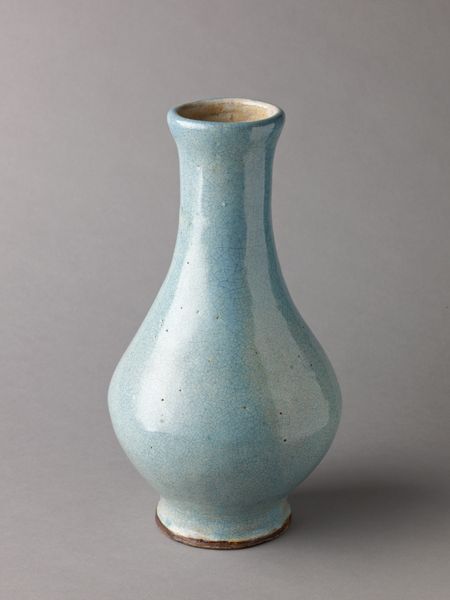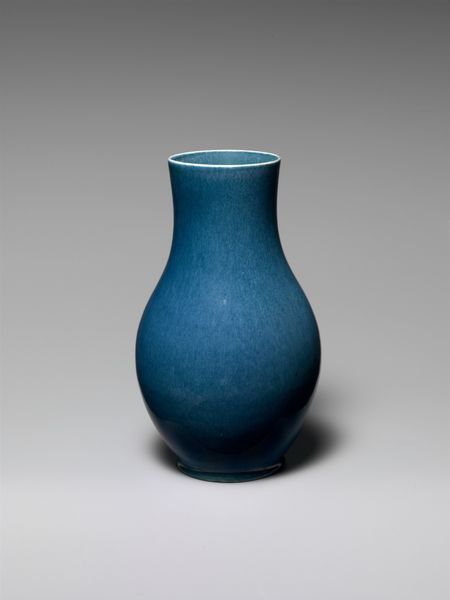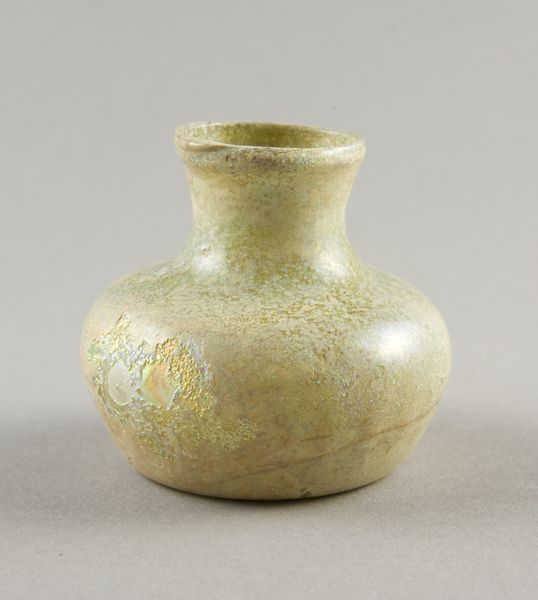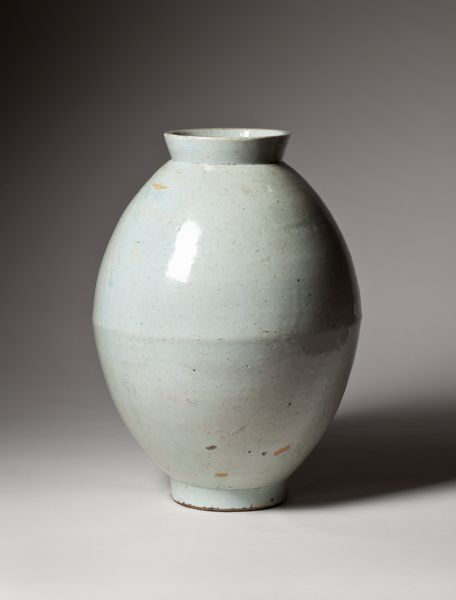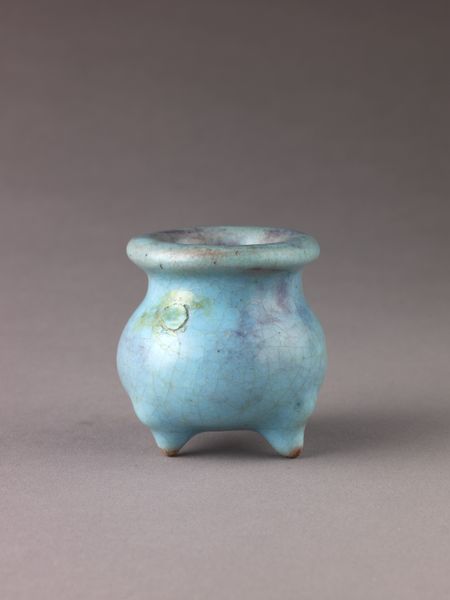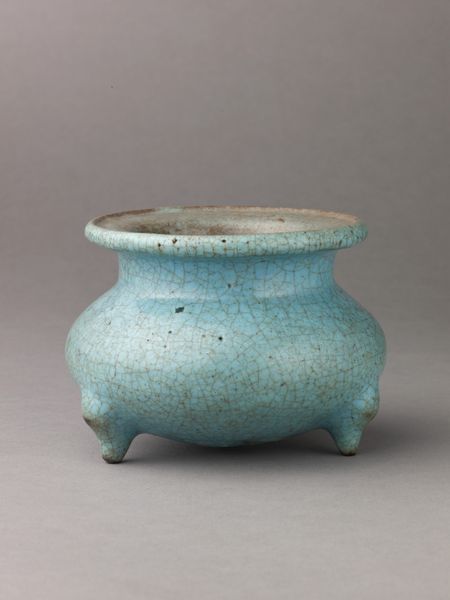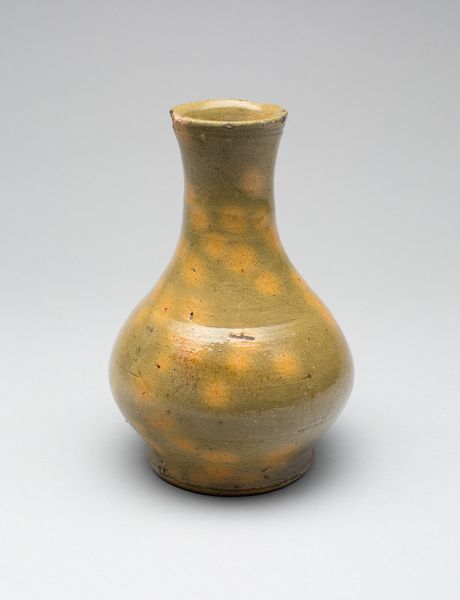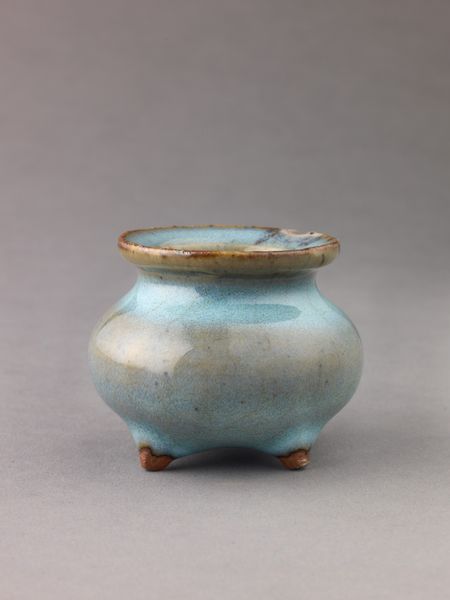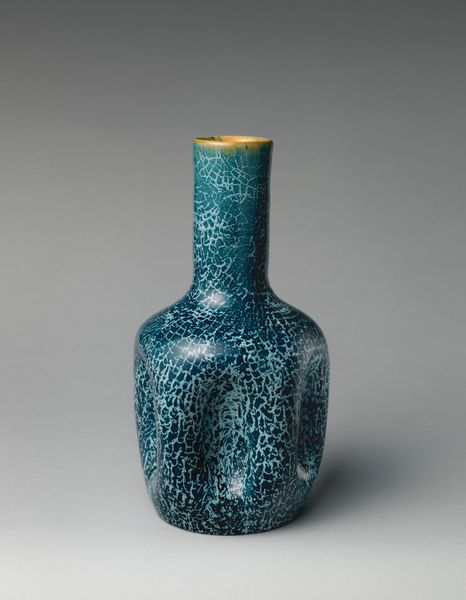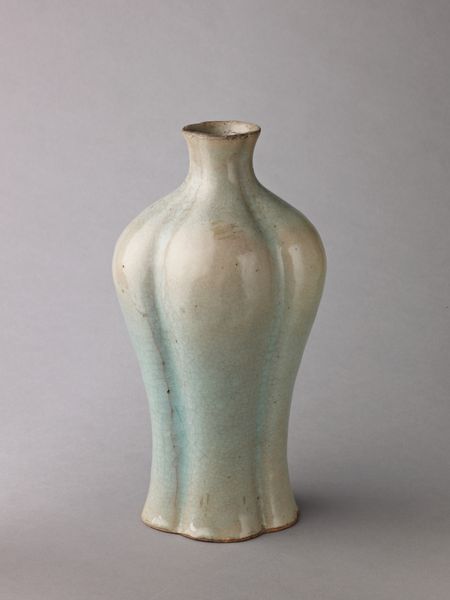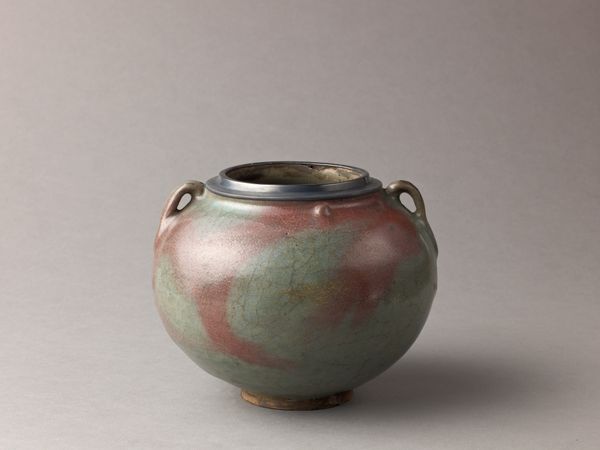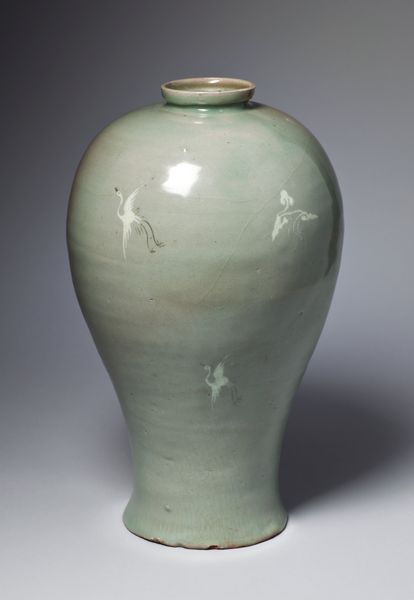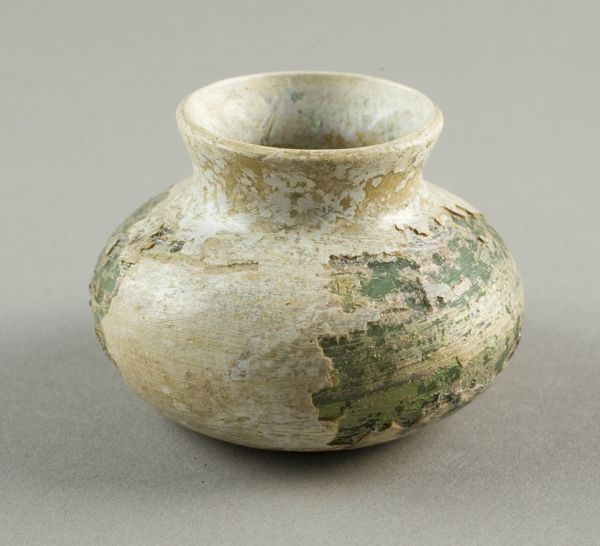
ceramic
#
white clean appearance
#
ceramic
#
jewelry design
#
food illustration
#
product design photgrpaphy
#
wash background
#
ceramic
#
soft and bright colour
#
watercolour bleed
#
watercolour illustration
#
watercolor
Dimensions: Height: 4 3/4 in. (12 cm.)
Copyright: Public Domain
Editor: Here we have a ceramic vase, created sometime between 1798 and 1902, its currently located at the Met. It has a beautiful seafoam green glaze and a subtle, almost fragile appearance. What draws your eye when you look at this piece? Curator: Immediately, I see an object burdened and beautified by time. Notice the crackled glaze, a network of fissures running across the surface. These aren't flaws; they're a map of the object's history. This technique, often deliberate in Chinese ceramics, speaks to a cultural embrace of wabi-sabi – the beauty of imperfection and impermanence. Editor: That's fascinating. The "flaws" become integral to the piece. Curator: Exactly. Each crack whispers of the kiln's intense heat, the earth's slow transformation. But what does the color evoke for you? Editor: The green makes me think of jade, something precious but also very natural. Curator: Indeed. Jade in Chinese culture symbolizes immortality and purity, often associated with spiritual power. This vase, then, becomes more than a vessel; it’s a keeper of cultural memory, carrying with it aspirations for longevity and harmony with nature. Consider, too, that objects like these often served ritualistic purposes or adorned the homes of scholars, reflecting refined tastes and social standing. Editor: I never would have seen so much looking at this vase! Thanks for pointing all of this out. Curator: My pleasure! Hopefully our listeners are now more mindful of the enduring presence of the past in everyday objects.
Comments
No comments
Be the first to comment and join the conversation on the ultimate creative platform.
